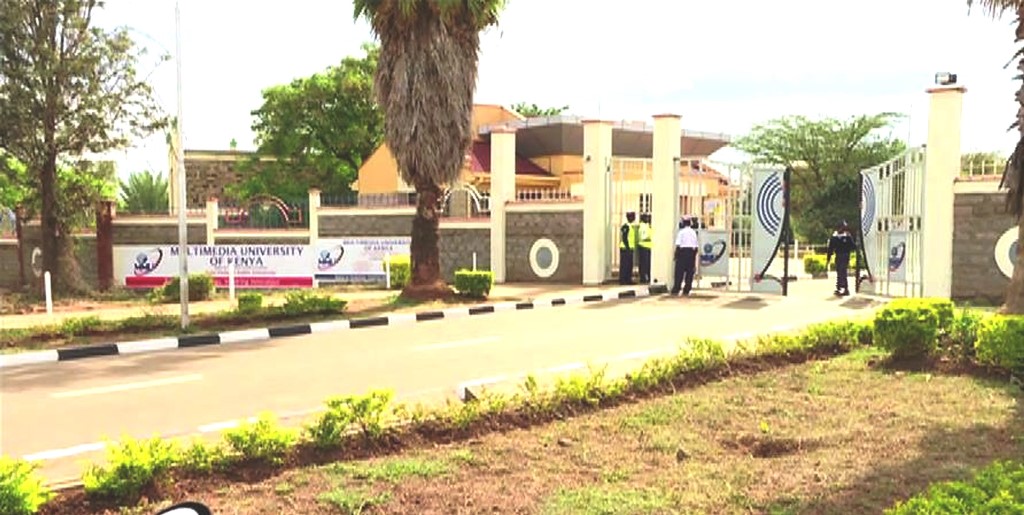Multimedia University of Kenya (MMU) is one of the few institutions in the world where lectures unfold on a campus that borders a national park. Located in Karen, MMU’s 75 hectare campus stretches right next to Nairobi National Park, creating a unique environment where wildlife and students often share the same space.
The closeness to nature provides a serene and calming atmosphere, ideal for learning. It also offers students a rare chance to observe wild animals up close, from warthogs roaming the lawns to monkeys swinging from rooftops and trees. Many students speak fondly of moments where animals passed near lecture halls, or when monkeys playfully made their way into classrooms, creating scenes that are both amusing and surreal.
However, while this proximity offers a blend of adventure and beauty, it also presents real dangers. Over the years, interactions between students and wildlife have not always been peaceful. One of the most serious incidents happened in February 2024, when a hyena attacked a second year engineering student, Kelvin Mwenda, as he returned to his hostel late in the evening. The hyena bit off his thumb and left him with deep facial injuries. The attack caused widespread fear and anger across the campus, prompting a spontaneous student protest that blocked Magadi Road the next morning. Police were forced to intervene using tear gas, while the university and Kenya Wildlife Service (KWS) officials rushed to respond.
That incident was not isolated. Students had long complained about repeated invasions by animals. Baboons have become known for entering hostels through windows, stealing food, and harassing residents. Some female students have reported being targeted more frequently by the aggressive primates, especially when walking alone or carrying food. In 2019, a video showing students fleeing from baboons that had stormed a basketball court went viral, highlighting how wildlife presence on campus has evolved from a novelty to a daily challenge.
ALSO READ:
Following the hyena attack, KWS officials led by senior officers visited the university and held urgent meetings with the Vice Chancellor, campus security teams, and student leaders. They launched an emergency response to deal with the hyenas suspected to be living in nearby thickets. Their team, known as the Problem Animal Management Unit, was deployed to track and remove the animals. In some cases, hyenas were trapped and relocated. In others, the animals were eliminated to prevent further attacks. The team also scouted for hyena dens near the campus and destroyed them to reduce repeat incidents. Additionally, students were encouraged to report any sightings immediately and avoid walking alone at night, especially in poorly lit or bushy areas near the park boundary.
When the then Cabinet Secretary for Tourism and Wildlife, Dr. Alfred Mutua, visited the affected areas in the aftermath, he attributed the increased animal incursions to a prolonged drought that had reduced food sources inside the park. He said hyenas and other predators had started venturing out in search of scraps and livestock, and in the process, clashed with people. Mutua promised several long term solutions.
He said the government would fast-track the construction of electric fences in vulnerable park border areas, including MMU’s side. He also committed to recruiting more KWS rangers to boost patrols and surveillance. The ministry further promised to set aside billions of shillings for compensation of those affected by wildlife attacks, including students like Mwenda. He also emphasized the need for community sensitization on how to behave during encounters with dangerous animals, warning that running away from predators such as hyenas could provoke an attack.
At the university level, administrators and external experts have continued exploring measures to ensure that students can live and study safely. Some of the ideas proposed include building stronger perimeter barriers between hostels and the park, especially using solar-powered electric fencing. Other suggestions include the installation of floodlights and motion-sensor alarms to detect animal movement at night.
ALSO READ:
How school’s Board of Management (BOM) plays a pivotal role towards quality education
Students have also called for improved hostel window grills to keep monkeys and baboons out, as well as stricter rules on garbage disposal to avoid attracting animals. There is a push to integrate safety drills into orientation for first-year students so that everyone knows how to respond to an animal encounter without panicking.
Despite the fear and anxiety caused by these events, many students remain deeply attached to the MMU experience. They speak of the wildlife with a mixture of respect and humor, often sharing stories online under the hashtag #OnlyInMMU. For some, the presence of animals is a reminder of how close they live to nature, a daily reality that few urban institutions can offer. For others, it is a concern that needs urgent attention before tragedy strikes again.
Balancing conservation with safety is not easy, especially in a rapidly urbanizing city like Nairobi. But MMU’s unique location offers the opportunity to set an example. With serious planning, firm policies, and the cooperation of government and conservation bodies, the university could become a model of peaceful coexistence between people and wildlife. It is a place where students should be able to chase their dreams without having to look over their shoulders for hyenas.
By Benedict Aoya
You can also follow our social media pages on Twitter: Education News KE and Facebook: Education News Newspaper for timely updates.
>>> Click here to stay up-to-date with trending regional stories
>>> Click here to read more informed opinions on the country’s education landscape






